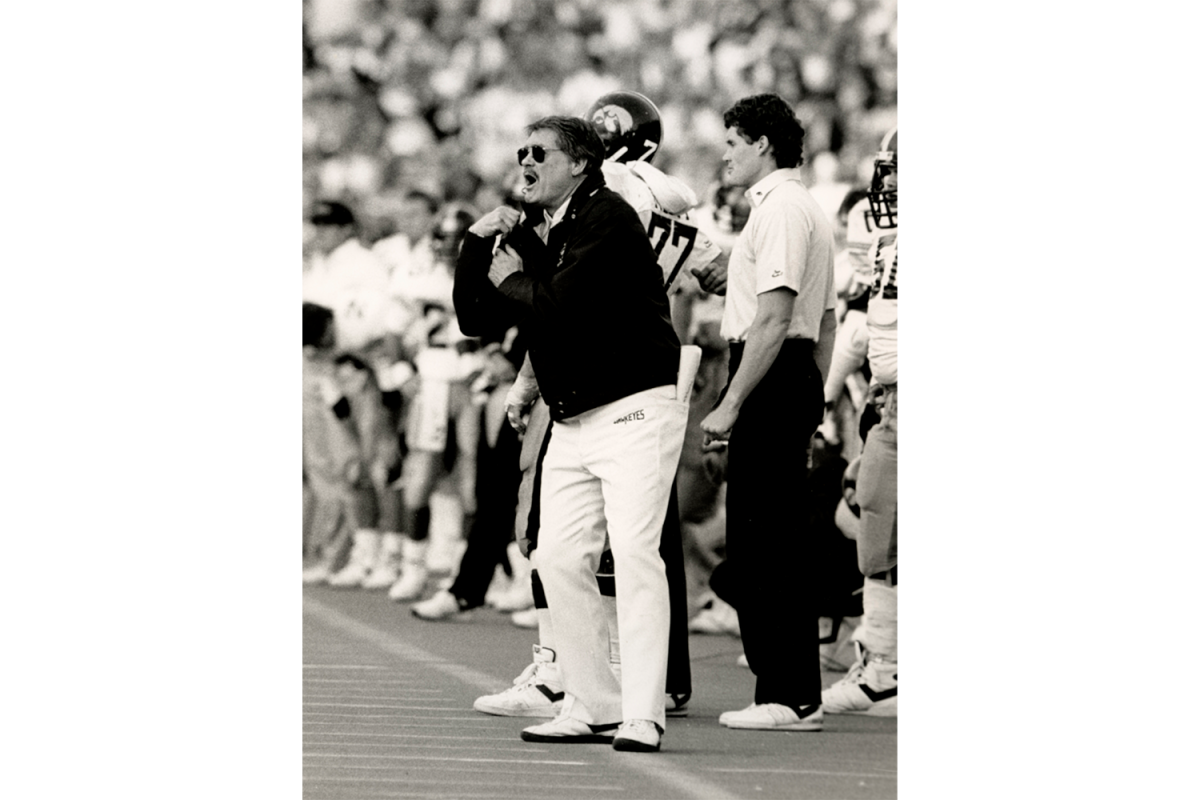Lectures can have a tendency to be long and boring, but if you pay attention, the information presented usually proves to be quite useful. While this principle applies to students engaged in schoolwork, it also applies outside of the classroom. Lectures serve a purpose. In fact, if you are willing to listen, a lecture can serve to open your eyes.
As chance would have it, I decided to attend one of the many events that the UI Lecture Committee puts on throughout the year and try my hand at listening outside of the classroom. I’m glad I did; Joe Ehrmann’s lecture “Healthy Masculinity From The Inside Out” truly did further my understanding of what it means to be a man in our society. Moreover, Ehrmann’s lecture inspired me to re-examine who I am and what it means to be a real man.
To understand how to be a real man and why many of us aren’t, you must first come to terms with the socially constructed man. Ehrmann lays out the claim that from a very young age, boys are socialized to believe that men should be macho. All it takes is a simple look at elements of everyday media to find the not-so-secret messages suggesting what it means to be a man. Particularly, Ehrmann posits that there are three distinct conceptions of manly qualities; athletic ability, economic success, and the “conquest” of women. Just take for example the stereotypical heroes in American discourse. Star athletes, rich celebrities, and womanizing reality stories dominate both news and conversation. Therefore, one can only imagine the impact of these symbols and suggestions upon the adolescent boy.
Consequently, as boys strive to fulfill masculine expectations, they are taught that aggressiveness is rewarded, while displays of emotion must be subjugated for the sake of appearing tough. Boys learn to put up an emotional front by scapegoating expressions of their true feelings as weak or womanly. To borrow Ehrmann’s analogy, boys begin to wear a mask that flaunts the masculine ideal beneath their true selves.
Furthermore, Ehrmann professes that many personal and social ills are directly caused by boys masquerading their true selves because they never develop the capacity to express themselves in a meaningful way. He cites the prevalence of depression and incidences of domestic abuse as two social problems that can be fundamentally traced back to an incongruence between the socially conceived man and the real man.
The ideal man is exemplified by not expressing emotion, but to be real requires that one forgo emotional suppression and actually express himself in a genuine way.
Now, I am by no means a medical professional; however, I do know that many doctors, psychologists, and sociologists preach the importance of staying true to oneself when it comes to mental health. So perhaps there’s substance to Ehrmann’s proposition of altering the paradigm of what it means to be a man. Rather than focus strictly on traits such as physicality, aggressiveness, economic success, and sexual conquest, maybe boys should also be taught how to engage in real, meaningful relationships with others in which they express their emotions.
In order to do this, we as a society need to reject the traditional definition of what it mean to be a man and embrace the true masculine ideal in which being a man has a more nuanced definition. Yes, it is a mildly revolutionary undertaking, yet all it really requires is bringing the heart and head together so that boys can take off their mask and learn how to be their true selves as they grow into men.










